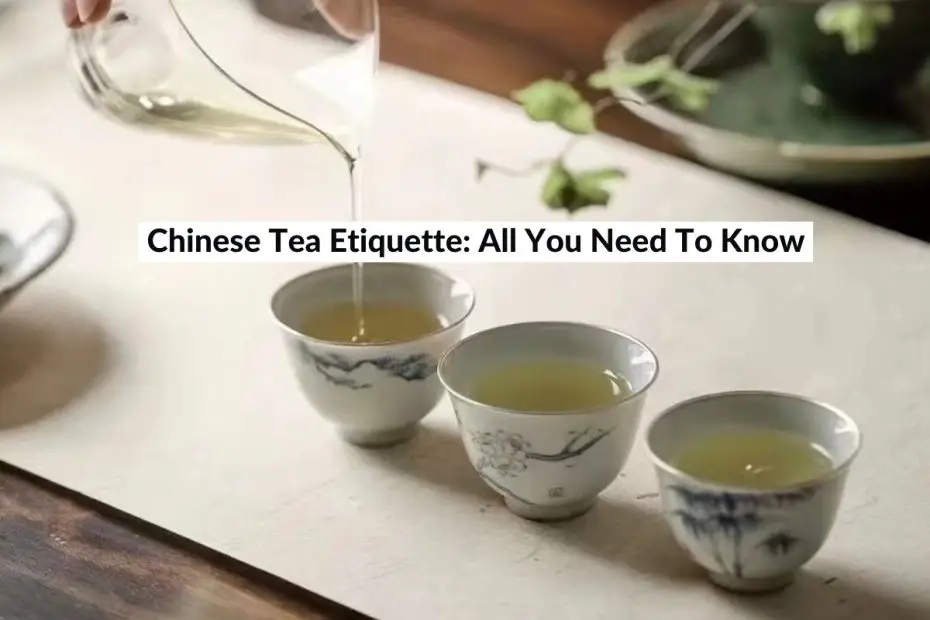Imagine stepping into a world where sipping tea is like joining a beautiful dance, blending elegance and tradition.
Picture yourself surrounded by a calm and peaceful atmosphere, where every little movement and every sip of tea reveals stories from the past and a touch of contemporary magic.
As we set out on this adventure into the fascinating world of Chinese tea etiquette, get ready to open a chest of hidden treasures, It’s like discovering a secret path that leads to a world of wonder with every delightful sip you take.
Chinese Tea Rule
Chinese Tea Attire👗
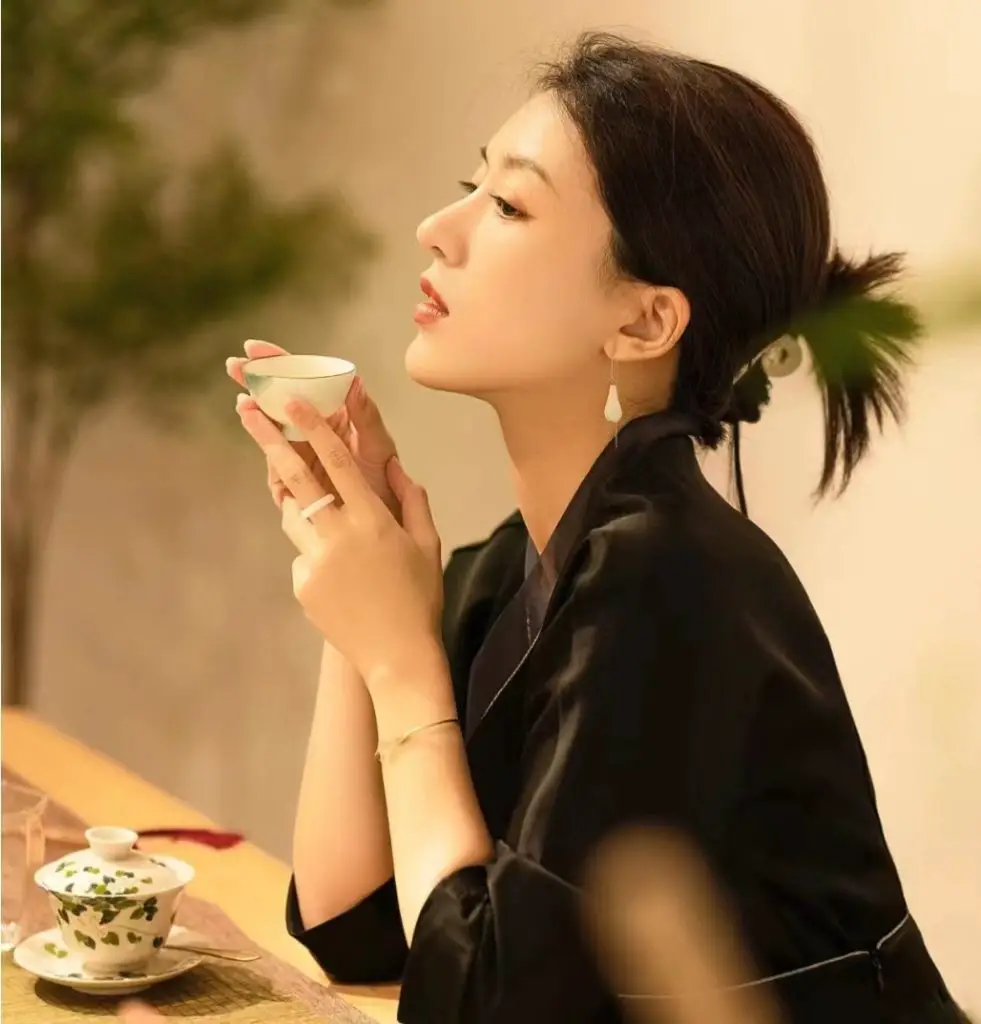
Attire and makeup should exude simplicity and elegance, accompanied by subtle jewelry, aligning harmoniously with the tranquil ambiance of the tea ceremony.
How To Hold The Tea Cup
The way to hold a Chinese tea cup is different for men and women.
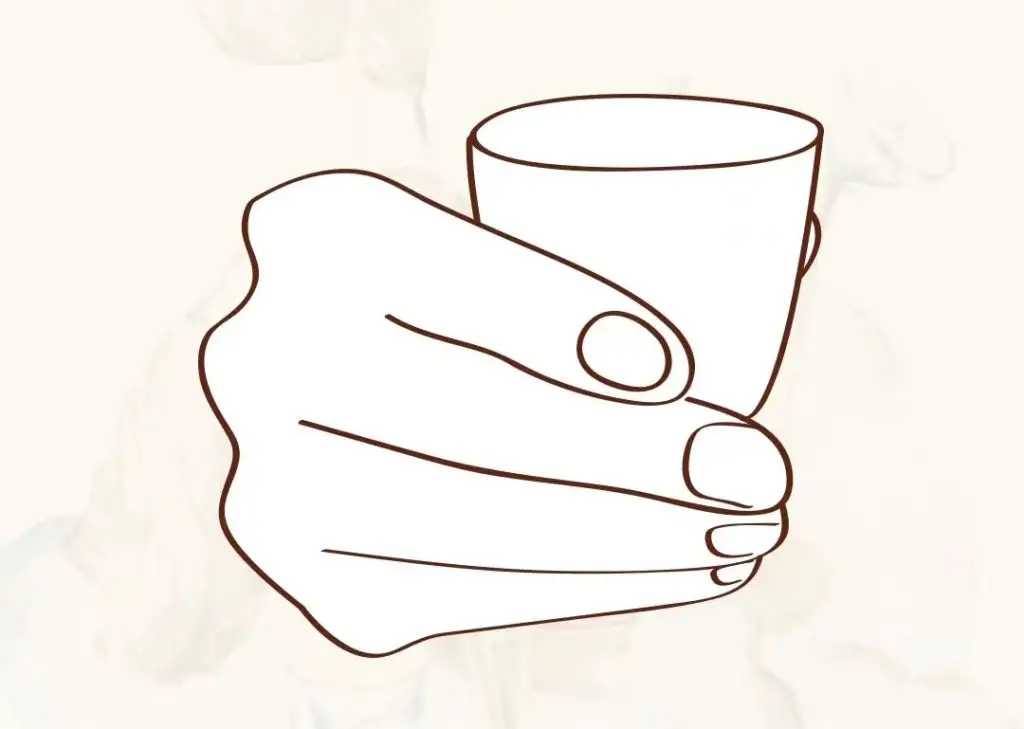
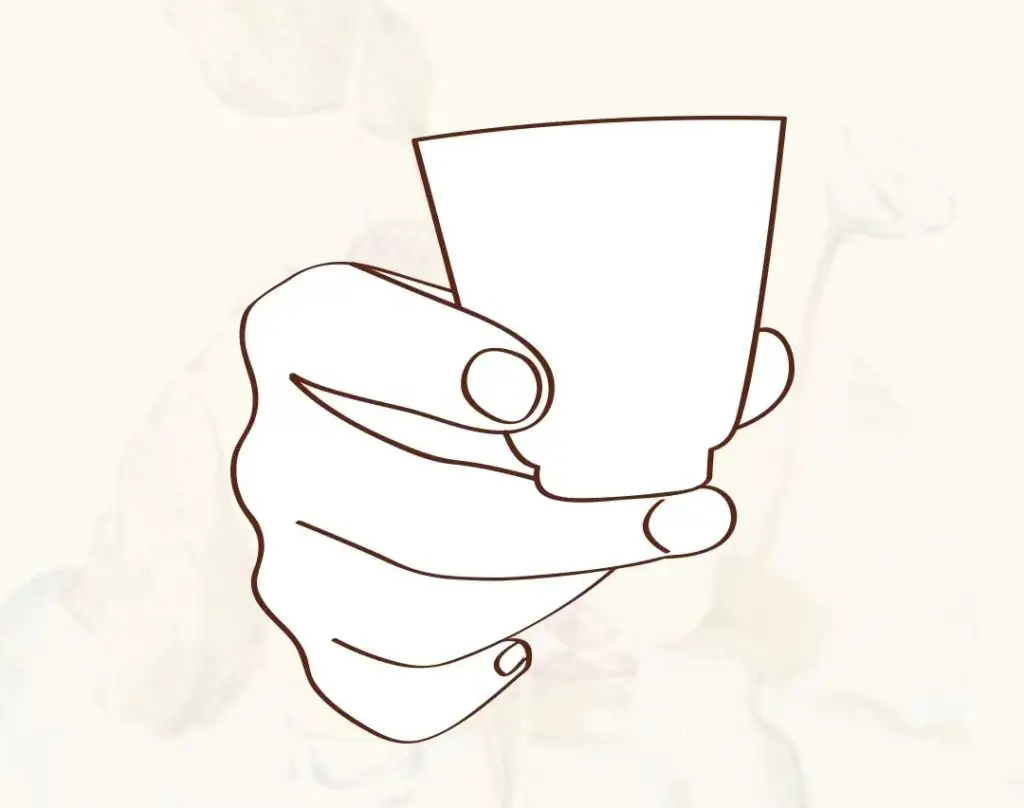
- For men, use your right hand to hold the cup’s rim with your thumb and index finger, while your middle finger supports the bottom – this is called “three dragons protecting the tripod.” Your left hand stays free.
- For women, it’s the same cup-holding style, but add a touch of elegance by curling your little finger, forming the orchid finger. Your left hand can also join in.
How to pick the perfect the tea pot? READ THE GUIDE HERE
Seating Etiquette🪑
In today’s world, not many folks are aware of the old-school rules in a traditional Chinese teahouse. Back in the day, there was this unwritten script for where everyone sits. So, here’s the scoop:
Picture this: the host has a bunch of guests around. The top-notch VIP spot is on the host’s left side – that’s where the star guest sits. And the seats get a little less fancy as you move from left to right. Like, left is primo, right is not-so-much.
But wait, there’s more! The super-duper respect goes to the wise old souls and the awesome teachers. They’re the kings and queens of seating. And guess what? Among them, the ladies get a little extra love if their ages are close.
Now, here’s a little twist: never park yourself right in front of the host. It’s kind of like blocking the view or something. But if there’s no other spot in town, kids can get a free pass to the front row.
So, there you have it – a slice of ancient seating wisdom for your modern teahouse adventures.
What kind of teaware is on the seating table? GUIDE HERE.
Sitting Posture🧘♂️
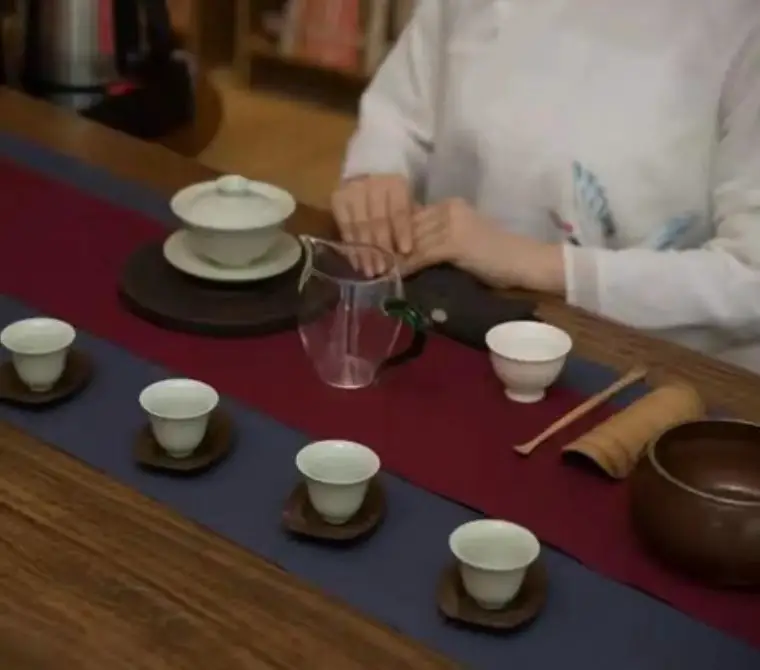
Maintain an upright posture and keep your shoulders relaxed.
For women, place your hands together and rest them on the tea table.
Men should have their hands open and resting on the table, roughly in line with their shoulders.
While there are specific rules for formal body gestures, these rules can be more relaxed in casual settings. In such cases, simply sit up straight and be yourself.
Rules For The Host
- When making tea, ensure that the teapot’s spout and sharp parts aren’t directed at any guest. Avoid placing two teapots so their spouts face each other to prevent a “fight.”
- When pouring tea, fill the guest’s cup up to three quarters to prevent burns from hot tea.
- The order for serving tea is: guests first, then the host; women before men; older individuals before younger ones. If someone other than the host is preparing tea (silu), they are served last.
- A thoughtful host refills empty cups. If a cup is half full, the guest doesn’t need more tea now. Replace cold tea with hot tea.
- If the tea looks too pale, it might signal it’s used; switch to fresh tea, or guests might feel it’s time to go. As a host, learn the “palm extension” gesture, which means “please” or “thank you.” Extend your hand with fingers together and slightly open thumb, while nodding and smiling.
Rules For The Guest
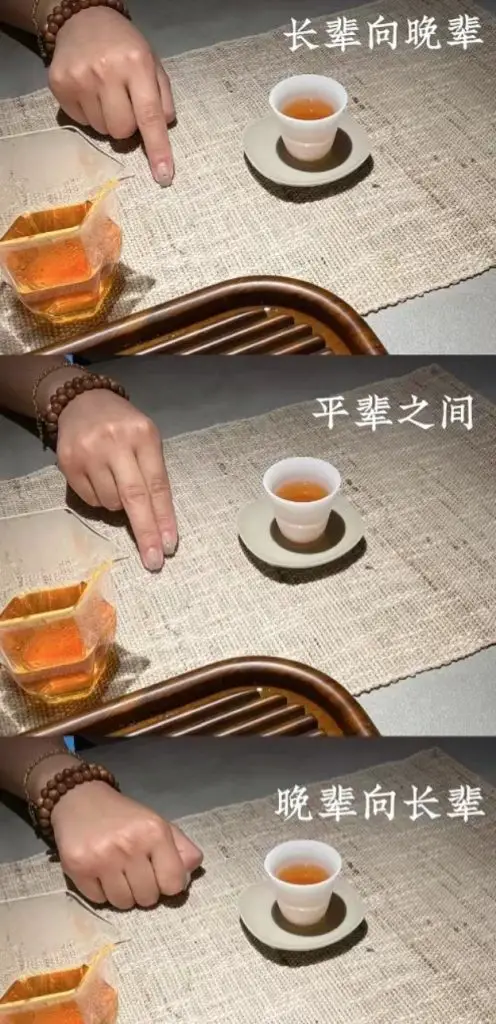
First and foremost, make sure you’re punctual. Being on time is like the starting point of this whole tea adventure.
When the host (or silu) is pouring that lovely tea, here’s a little secret handshake with the table – it’s like saying, “Thanks, you’re awesome!” Now, let’s get into the details of this table-tap ritual.
- If you’re a young tea-sipper getting tea from someone older and wiser, give a friendly fist bump to the table. It’s like a mini bow that says, “Hey, thanks a bunch!” Three taps are the magic number.
- Now, if you and the host are kind of like tea buddies in the same age club, put your pointer and middle fingers together and give the table a gentle tap. It’s like nodding with a wink. Three taps again, to show your respect and all.
- If you get tea from someone younger, just use your pointer finger for a little taparoo. It’s like a simple nod to the universe. You guessed it – three taps.
When you’re at a tea party and the host offers you the first cup of tea, that’s like a special moment. It’s your way of saying, “Thanks, you’re awesome!” This is a big deal in the traditional tea world.
Here’s how it goes down: First, you stand up. If you’re a guy, your left hand is like a fist, and your right hand covers it. If you’re a girl you put your hands together like you’re saying a quiet “hi.” Then, you give a little nod, sit back down, and grab that teacup.
Before taking a sip, give the tea a good sniff. It’s like saying “hello” to its aroma. Then, go ahead and sip the tea slowly. Take your time and enjoy the flavor.
So, there you have it – a classy way to show your love for the tea and the host, all in a few simple moves.
Don’ts in Chinese Tea House🚫
- Don’t Chug: Avoid downing your tea like it’s plain water. Take small sips and let the flavors unfold, from tangy to sweet and the lingering taste that’s hard to describe.
- No Tea Spit: Never spit out tea like you’re a human fountain. It’s not polite, especially when the tea server is watching. This signals you’re not interested and might even upset the host.
- Smoke-Free Zone: Keep those cigarettes away while you’re sipping tea. Lighting up is a no-no. If you really need a smoke, check with the host after a few sips.
- Stay Present: Don’t drift off into daydreams while sipping tea. Stay focused and relaxed. Tea isn’t just a drink; it’s like a calming buddy. It helps you unwind when stressed, chill when restless, and tastes amazing when you’re at peace. It’s like a friendly sipper!
Chinese Tea Serving Rituals🍵
Chinese tea serving rituals are an integral part of traditional Chinese culture and are often deeply ingrained in social interactions, ceremonies, and daily life.
These rituals vary based on the type of tea being served and the context in which it is being served. Here, I’ll describe some common elements of Chinese tea serving rituals:
| Step | Description |
|---|---|
| Preparation and Presentation | Use high-quality tea leaves and teaware. Arrange teaware neatly. |
| Warming the Teaware | Pour hot water into teapot and cups to warm and clean them. |
| Tea Leaf Placement | Add tea leaves to the teapot (amount varies by preference). |
| Rinsing the Tea Leaves | Pour hot water over leaves, then pour it out to remove bitterness. |
| Infusing the Tea | Pour hot water over leaves, steep for the appropriate time. |
| Tea Pouring | Pour tea into small cups in a circular motion for even distribution. |
| Tea Tasting | Observe color and clarity, inhale aroma, savor the flavor. |
| Refilling and Sharing | Re-infuse leaves with hot water for multiple servings. Share and refill cups. |
| Appreciation and Conversation | Discuss tea’s aroma, flavor, and qualities while enjoying. |
Remember, these steps may vary based on the specific type of tea and regional traditions.
Chinese Tea Philosophy🍃
Teaism, rooted in Chinese and Japanese tea cultures, harmonizes with Zen and Taoism, embodying simplicity, calm, and meditation. Crafting and savoring tea offers respite from daily complexities, inviting introspection through mindful rituals.
Tea’s journey mirrors Lotung’s verse: the first cup awakens, the second banishes loneliness, the third seeks within, finding 5000 symbols of heart’s depth. The fourth sweats out negativity, the fifth purifies, the sixth beckons immortality. The seventh, wind-kissed, whispers a new perspective. (Read More Tea Benefits Here)
Teaism illuminates tea’s transformative power—more than a drink, a meditative passage. Each cup nurtures self and connection to nature. With every sip, embrace tranquility, mindfulness, and a voyage into the profound realm of tea.
FAQ:
Who pours tea at a Chinese dinner?
Typically, the younger or more junior person at the table pours tea for their elders or seniors as a sign of respect.
What does tea symbolize in Chinese culture?
Tea symbolizes purity, harmony, and refinement. It’s a cultural emblem of hospitality, social bonding, and the appreciation of nature’s beauty.
What is the social significance of tea?
Tea facilitates bonding, communication, and etiquette. Sharing tea fosters relationships, diffuses conflicts, and showcases traditional values of respect and mindfulness.
